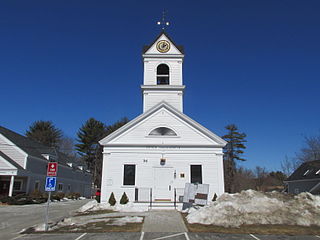
North Hampton is a town in Rockingham County, New Hampshire, United States. The population was 4,538 at the 2020 census. While the majority of the town is inland, North Hampton includes a part of New Hampshire's limited Atlantic seacoast.
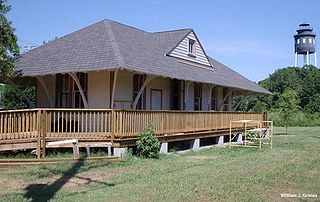
Cape Charles is a town / municipal corporation in Northampton County, Virginia, United States. The population was 1,009 as of the 2010 Census.

Hampton Beach is a village district, census-designated place, and beach resort in the town of Hampton, New Hampshire, United States, along the Atlantic Ocean. Its population at the 2020 census was 2,598. Hampton Beach is in Rockingham County, approximately 15 miles (24 km) south of Portsmouth. The community is a popular tourist destination and the busiest beach community in New Hampshire. Ocean Boulevard, the main street along the beach, includes a boardwalk, many shops and businesses, several seasonal hotels, and the Hampton Beach Casino Ballroom, which hosts national acts in the summer. Hampton Beach State Park was named one of four "Superstar" beaches in the United States in 2011, for having had perfect water-quality testing results in each of the previous three years.

Castle Hill is a 56,881 sq ft (5,284.4 m2) mansion in Ipswich, Massachusetts, which was completed in 1928 as a summer home for Mr. and Mrs. Richard Teller Crane, Jr. It is also the name of the 165-acre (67 ha) drumlin surrounded by sea and salt marsh that the home was built atop. Both are part of the 2,100-acre (850 ha) Crane Estate, located on Argilla Road. The estate includes the historic mansion, 21 outbuildings, and landscapes overlooking Ipswich Bay on the seacoast off Route 1, north of Boston. Its name derives from a promontory in Ipswich, Suffolk, England, from which many early Massachusetts Bay Colony settlers immigrated.

Rye Beach is an unincorporated community along the Atlantic Ocean in Rye, New Hampshire, United States. It is located along New Hampshire Route 1A near the southern border of the town of Rye, directly south of Jenness State Beach and north of Little Boar's Head. Rye Beach has a separate ZIP code (03871) from the rest of the town of Rye.

The Franklin Falls Historic District is a 75-acre (30 ha) historic district encompassing most of the civic and industrial heart of Franklin, New Hampshire, which saw its most significant development in the second half of the 19th century and the first decades of the 20th. The district is focused on Central Street between two crossings of the Winnipesaukee River, and includes Odell Park along with industrial properties along the bend in the river north of those two crossings, as well as a number of properties on adjacent streets south of Central Street. The district was listed on the National Register of Historic Places in 1982.

The Beach Club is a private oceanfront club at 2450 Ocean Boulevard in Rye, New Hampshire. Founded in 1925, it is the only beachfront private club to survive from the early 20th century along New Hampshire's coast. It was listed on the National Register of Historic Places in 2013.
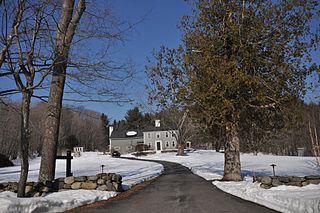
The Highland Road Historic District is a historic district encompassing a rural neighborhood in South Hampton, Rockingham County, New Hampshire. The historic farm estates which characterize the neighborhood date to the turn of the 18th century. The district was added to the National Register of Historic Places (NRHP) in 1983.
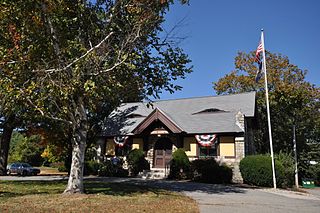
The Old North Hampton Library is a historic library building at 237 Atlantic Avenue in North Hampton, New Hampshire. The small, single-story Tudor Revival structure was designed by Boston architect J. Lawrence Berry and built in 1907. It was the town's first purpose-built library building, and was used as such until a new library was built nearby in 1973. It presently houses town offices. The building was listed on the National Register of Historic Places in 2014, and the New Hampshire State Register of Historic Places in 2013.
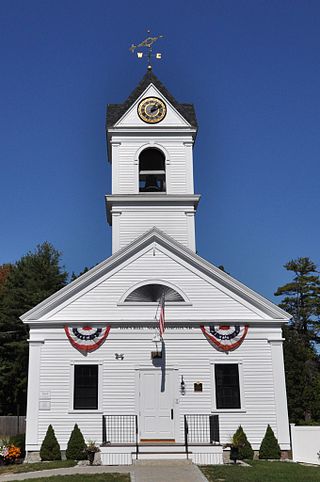
The North Hampton Town Hall is located at 231 Atlantic Avenue in North Hampton, New Hampshire. Built in 1844, it was the town's first purpose-built municipal building, and continues to be used as such. Its construction includes materials recovered from older dual-purpose religious and civic buildings, and its tower houses a Revere bell. The building was listed on the National Register of Historic Places in 2013, and the New Hampshire State Register of Historic Places in 2006.

The Smith's Corner Historic District is a historic district encompassing a historic 19th-century rural village center. Covering about 105.5 acres (42.7 ha), the district is centered on the junction of Main Avenue, South Road, and Chase Road in northwestern South Hampton, abutting its border with East Kingston. The village was important as a stagecoach stop. The district was listed on the National Register of Historic Places in 1983.

The Town Center Historic District encompasses the historic village center of South Hampton, New Hampshire. Centered around the Barnard Green, the town common, on New Hampshire Route 107A, it includes architectural reminders of the town's growth and change over time. The district was listed on the National Register of Historic Places in 1983.

The New Hampshire Veterans' Association Historic District encompasses a large cluster of late 19th-century summer resort properties in the Weirs Beach area of Laconia, New Hampshire, United States. The district is a nearly 8-acre (3.2 ha) area developed by the New Hampshire Veterans' Association, which was formed to support summer reunions of veterans of the American Civil War. Over the following decades the group expanded its range to encompass veterans from all of the United States' war efforts. The architecture of the resort area the association developed is distinctive, as the resort houses were built to accommodate entire regiments. The district includes 18 buildings, five of which front on Lakeside Avenue and have expansive views of Lake Winnipesaukee and the Weirs Beach area. Most of the remaining buildings are located on Veterans Avenue, which runs roughly parallel to, and behind, Lakeside Avenue. The district was listed on the National Register of Historic Places in 1980.
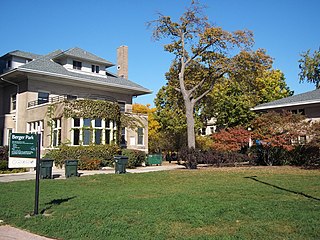
Berger Park, officially Park #1255 of the Chicago Park District, is a small recreational area bordering Lake Michigan in the Edgewater neighborhood of North Side, Chicago, Illinois. The park features the historic Downey House and Samuel H. Gunder houses.
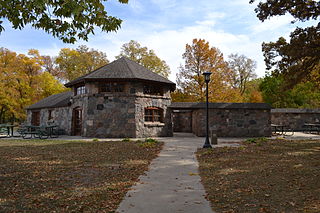
Beeds Lake State Park is located northwest of Hampton, Iowa, United States. It was listed has a historic district on the National Register of Historic Places as Beeds Lake State Park, Civilian Conservation Corps Area in 1990. At the time of its nomination it contained 21 resources, which included one contributing building, 15 contributing structures, and five non-contributing structures. The 319-acre (129 ha) park surrounds a 99-acre (40 ha) reservoir. It features hiking trails, boating, fishing, swimming, camping, picnic areas and shelters, lodges and concessions.

North Hampton State Beach is a one-acre state park located on the Atlantic Ocean in the town of North Hampton, New Hampshire. The park offers swimming at a sandy beach with a bathhouse and metered parking.
Fuller Gardens is a seaside public botanical garden located at 10 Willow Avenue in the town of North Hampton, New Hampshire, United States, in a historic area known as "Little Boars Head". Developed in the early 20th century, the gardens are set on three acres (1.2 ha) and feature formal rose gardens, a Japanese garden, English perennial borders, a tropical and desert conservatory, tulip and annual beds, a hosta garden and a dahlia display area. The gardens are open to the public daily from mid-May through mid-October.

Sag Harbor Hills, Azurest, and Ninevah Beach Subdivisions Historic District (SANS) is an African American beachfront community in Sag Harbor, New York. Founded following World War II, the SANS community served primarily as a summer retreat for middle-class African American families during the post-WWII and Jim Crow era. African American families were not allowed at beachfront resorts, pools or beaches, and SANS began as a place of refuge from racial strife. The historic district is bordered by Hempstead Street, Richards Drive, Hampton Street, Lincoln Street, Harding Terrace, Terry Drive and the eastern end of Haven's Beach in Sag Harbor. It was placed on the National Register of Historic Places on July 10, 2019.
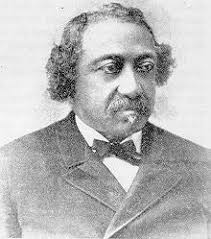
John Garrison Cutler was a well-known African American entrepreneur and member of the New Hampshire Republican Party who hosted sitting presidents and many others at his "Cutler's Sea View Hotel" at Hampton Beach, New Hampshire, in the late 1800s until his death in 1913. He was the grandson of an enslaved man who fought in the Revolutionary War, thus earning his freedom.






















